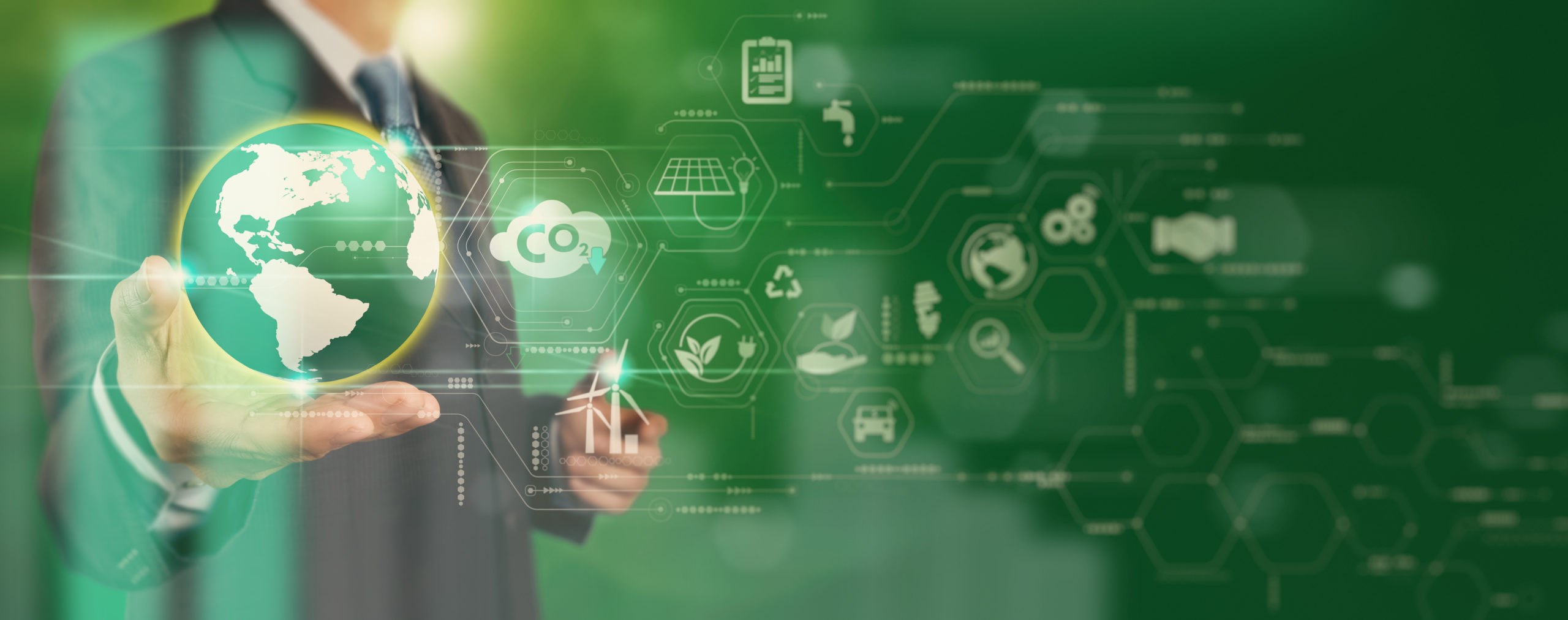
Preparing for What’s to Come Amidst the SEC Proposal
Giovanna Busco | April 22, 2022 | Energy & Sustainability
What do the new SEC greenhouse gas regulations mean for business?
In the past, the U.S. has lacked clear standards on corporate transparency as it relates to climate impact and the risk of business operations. As a result, it has been difficult to set industry goals and benchmarks, and challenging to understand where businesses should focus their own sustainability efforts. However, on March 21st, 2022, U.S. regulators made a long-awaited step toward changing this lack of standards with a landmark proposal of rule changes by The Securities and Exchange Commission (SEC). The proposed disclosures draw heavily from widely accepted disclosure frameworks, such as the Task Force on Climate-Related Financial Disclosures and the Greenhouse Gas Protocol.
If passed, the rules would require publicly traded companies to report information on Scope 1, 2, and 3 Greenhouse Gas (GHG) emissions and risks related to climate change – a huge acknowledgment by U.S. regulators that climate change poses a serious risk to our economies and financial institutions. But what does this news truly mean for business? To understand that, first we must break down what the different types of emissions are and why it has been so challenging to measure them in the past.
What are the 3 Scopes of Greenhouse Gas Emissions?
The GHG Protocol Corporate Standard classifies a company’s GHG emissions into three ‘scopes.’ Scope 1 emissions are direct emissions from owned or controlled sources, like those that stem from a companies’ own facilities or vehicles. Scope 2 emissions are indirect emissions from the generation of purchased energy like the steam, heating, cooling, and electricity that power those facilities. Scope 3 emissions are all indirect emissions not included in Scope 2 that occur in the value chain of the reporting company, including both upstream and downstream emissions. These include emissions from the transportation or distribution of products or goods, investments, business travel, or even emissions from employees’ commutes.
Why is it so difficult to report on each Scope?
Reporting on each of these scopes and on overall Greenhouse Gas accounting can be an extremely time-consuming burden for corporations. Imagine a corporation with operations throughout the country – or even the globe – with Utility Supply and Delivery service to each owned and operated facility. Consumption of various energy types, including electric, natural gas, steam, and heating and cooling, would need to be aggregated and then properly converted to greenhouse gas equivalents following The GHG Protocol Standard.
Further complicating matters is the fact that Scope 3 is notoriously challenging to measure because it includes emissions the company is not directly responsible for, or even sometimes aware of.
DON’T GREENWASH: TEST YOUR SUSTAINABLY PROGRAM TODAY
How can US-based companies prepare?
Right now, it’s still unclear how wide of a net would be cast with the SEC’s new proposal or if it would impact all publicly traded companies. However, less than one-third of public companies disclose their emissions voluntarily. Regulation and pressure will surely only continue to mount in the future. What’s certain is that many companies will feel the effects of this proposal and understand that it’s time to get ahead of regulations.
So where do companies start? First, companies must define their organizational and operational boundaries of Scope 1, 2, and 3 emissions. For Scopes 1 and 2, the boundary is clearly defined as Owned and Controlled sources. Once those boundaries are determined, companies can then begin compiling the data from these sources on direct and indirect emissions. While this is the most burdensome task, especially within decentralized business operations, Urjanet provides a unique solution for aggregating and automating data capture for Scope 1 and 2 emission categories with the world’s largest network of utility data.
This compiled data is then converted to Greenhouse Gas equivalents following the standard set forth by The GHG Protocol. With Urjanet’s help corporations have access to automation and expertise during their processes.
From here, companies could provide certain climate-related information in their registration statements and annual reports, including specific information about climate-related financial risks and climate-related financial metrics in their financial statements. While cumbersome to start, establishing a process around data collection and making this information more readily available and transparent will help push corporations to better understand their emissions – and, ultimately, how they can be reduced.
Let Urjanet help your business prepare for what’s coming
Regardless of if the SEC proposal passes, this moment is a harbinger of what’s to come in the ESG industry. That is why it’s so important for companies to be making changes now – whether it’s the SEC or market changes, it’s clear that greater transparency within GHG accountability will shift the landscape in the next decade. Staying ahead of the ESG curb requires reliable reporting and processes, as your company prepares for the future Urjanet’s Utility Cloud can help. Speak to one of our utility data specialists today to learn how.
YOU MIGHT ALSO BE INTERESTED IN:
- How Utility Data Can Support Climate Action
- Support Business Continuity through ESG Risk Mitigation
- Why Sustainability is Good for Business
If you like what you’re reading, why not subscribe?
About Giovanna Busco
You May Also Like
Support Business Continuity by Embracing ESG
Honor Donnie | March 18, 2022 | Energy & Sustainability
